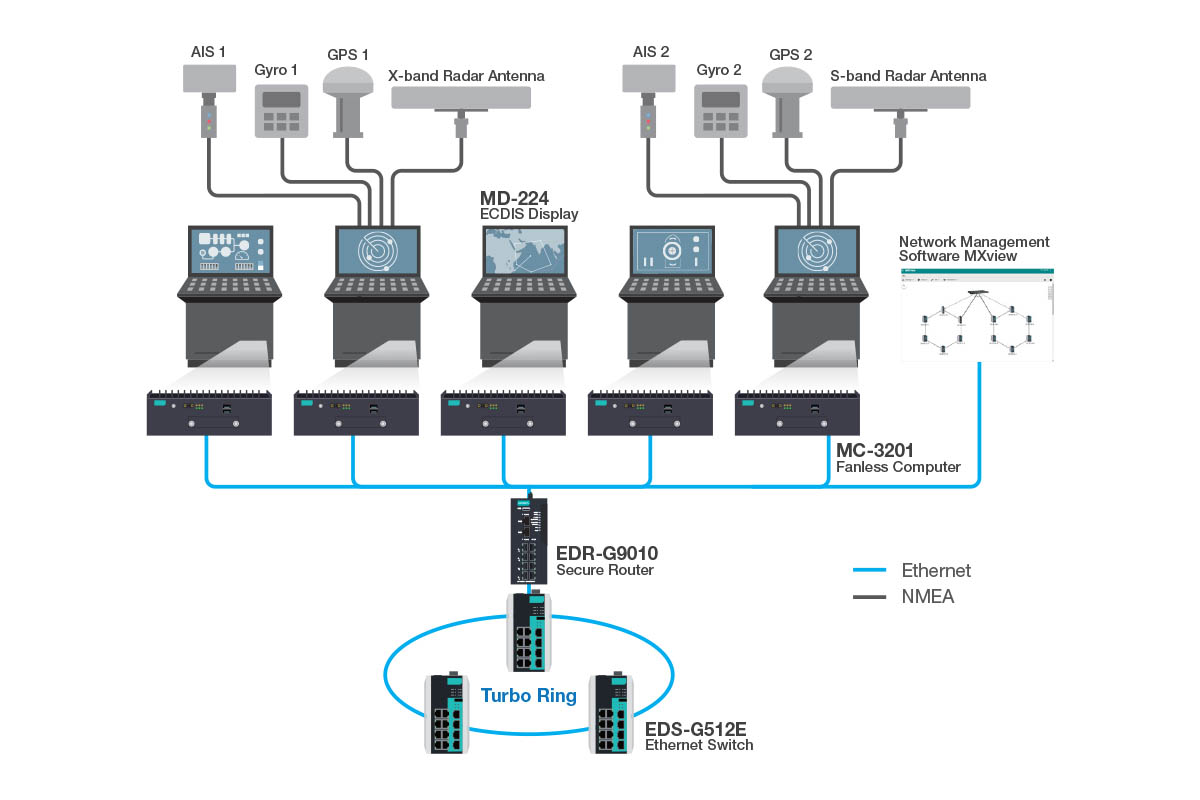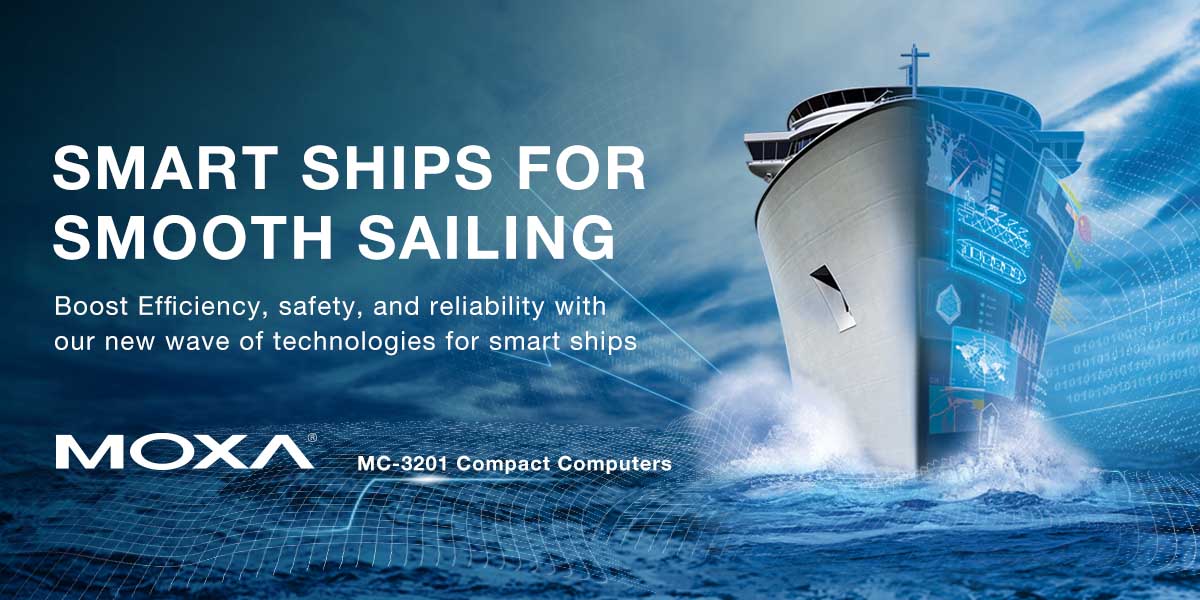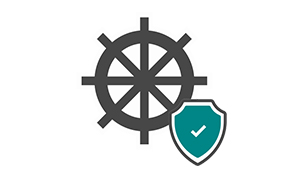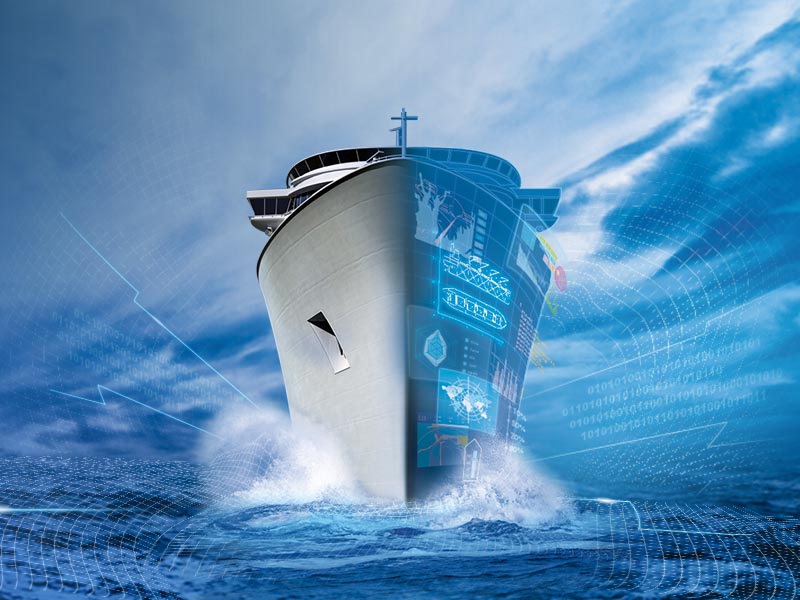
Marine Solutions Designed for the Entire Ship
Moxa provides maritime professionals with industrial-grade marine computers, panel PCs, displays, and Ethernet switches that use leading technologies and reliable designs perfect for applications on the bridge, in a control room, or in an engine room. Moxa’s marine solutions pass strict tests and follow industrial standards to ensure compliance with international marine standards such as DNV, LR, ABS, NK, CCS, IEC 60945, and IACS E10.
Sailing to a Smarter Future
Moxa provides maritime professionals with industrial-grade marine computers, panel PCs, displays, and Ethernet switches that use leading technologies and reliable designs perfect for applications on the bridge, a dock, an open deck, or in a control room. Moxa’s marine solutions pass strict tests and follow critical industrial standards to ensure compliance with international marine standards such as DNV, LR, ABS, NK, CCS, IEC 60945, and IACS-E10. Furthermore, our high performance, IP66/67, fanless, compact, rugged designs help reduce costs and streamline system integration.
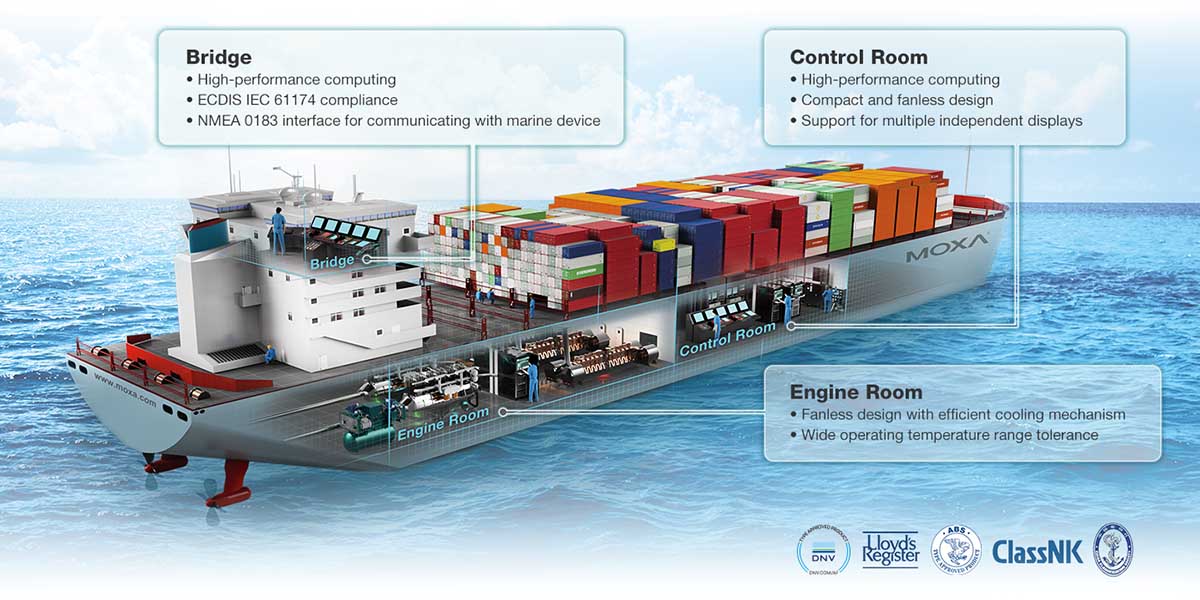
The Keys to Building a Smart Ship
To guarantee navigational safety and improve the operational efficiency of a ship, there is an emerging trend of creating Smart Ships. The Smart Ship concept covers a whole range of improvements that include predictive maintenance, performance optimization, decision support tools, increased automation and robotics, and unmanned remote or autonomous ship operation. Smart Ships are reliant on big data, so reliable real-time data transmission, data collection, and remote control play a key role in building Smart Ships. Moxa offers high-performance computers, displays, and high-bandwidth networking solutions to ensure fast and reliable display, processing, and communication of data.
Powers the World’s First Certified Smart Ship
Our high-performance solutions empower the navigation systems of the world’s first LR-certified smart ship.
Solutions Validated by Maritime Authorities
IEC 60945, IACS E10, DNV, ABS, LR, NK, and CCS certified computing, display, and networking solutions.
Secure, Reliable, and Advanced Networks for Navigation
Moxa’s solutions include advanced network redundancy and IEC 62443 cybersecurity.
Secure, Reliable Maritime Ethernet Switches
Among the harsh shipboard elements network switches must resist are extreme temperatures, daily exposure to water, and constant vibration. Additionally, ship systems must also meet stringent reliability requirements like full redundancy and strong security, all while reliably managing a heavy stream of automation and control applications that receive constant input from large arrays of sensors and instruments. Moxa delivers switching solutions for every layer of a hierarchical network—whether at the top or bottom, edge or core— making it easy to find the right device for any marine networking need.
Overview
An integrated automation system (IAS) for marine applications facilitates the fully-integrated operation of a ship, where systems and equipment must function seamlessly to ensure productivity and efficiency. Computers play an important role in the success of an IAS platform as they are used to collect and transmit data from a wide array of systems, including engine, thruster, and propulsion monitoring as well as alarm systems. To ensure safe operation of a ship, computers are used to constantly monitor external systems in real time, trigger alarms and warnings, and deliver information to the control systems for processing.
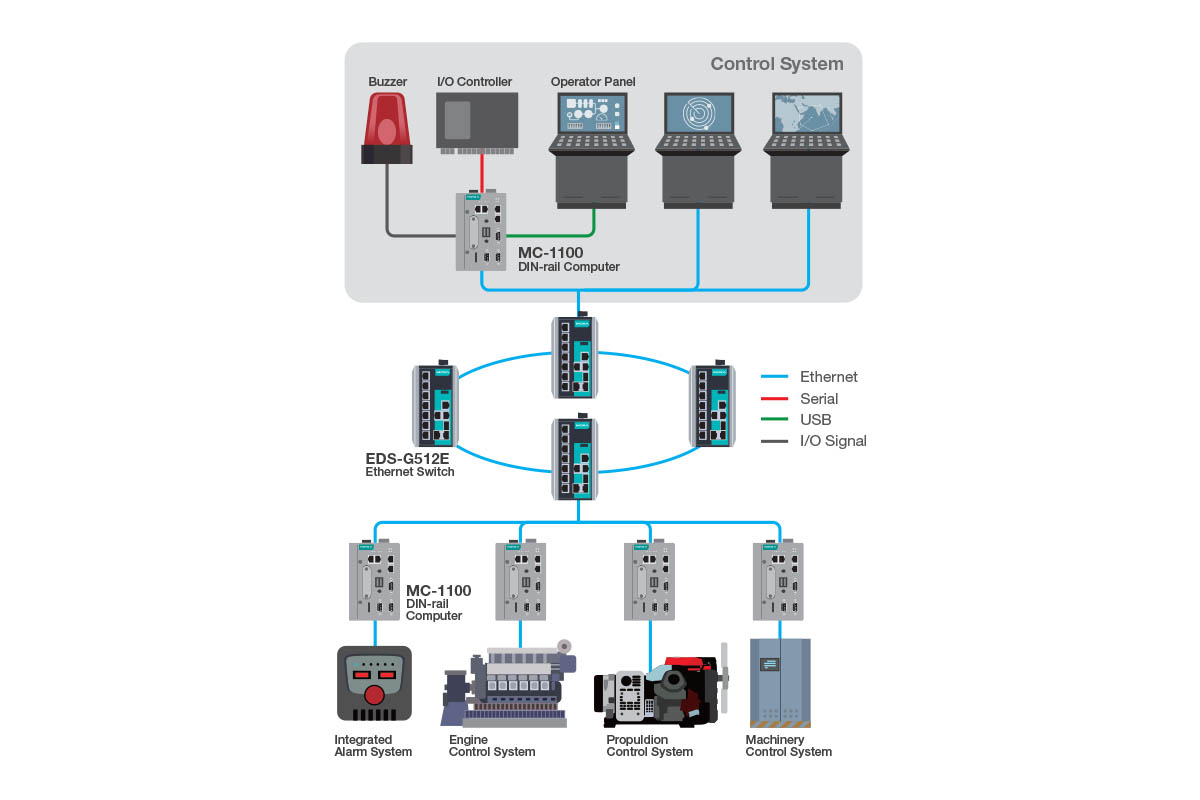
Redundancy and Reliability
To achieve the safety level set in MSC.252(83), redundancy is essential in an INS. This includes system and device redundancy. In an INS where five workstations are connected to one conning system, two ECDIS systems, and two radar systems, all workstations must be able to access data from any system, either through a direct connection or through the Ethernet network. Deploying backups for mission-critical devices in a vessel is a common method to achieve device redundancy. For example, an INS can have two sensor systems and two radar systems and these systems send the same data to multiple workstations. In the event one sensor or radar system becomes unresponsive, the backup system can still provide the necessary data to ensure continuous operation of the vessel. In an INS where devices are connected to serial device servers that make device data available on the Ethernet network, workstations no longer need to have a rich set of communication interfaces. This results in reduced setup costs and network complexity. However, the reliability of the network and the serial device servers is critical to ensure the INS is reliable.
